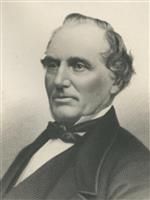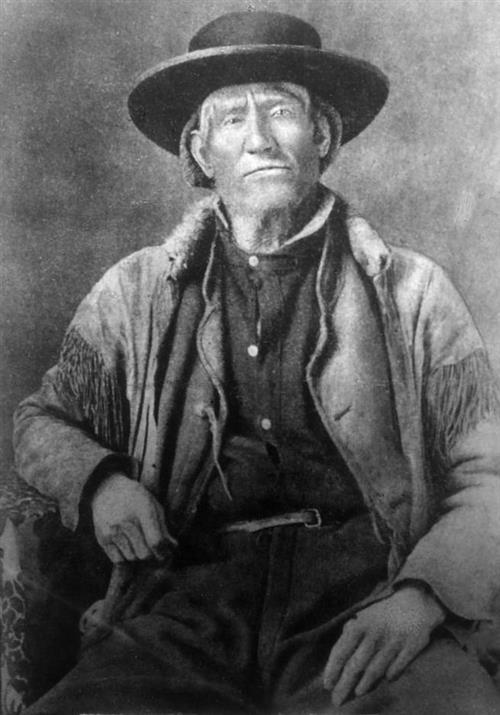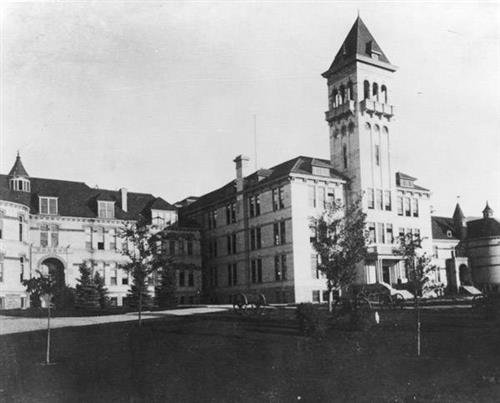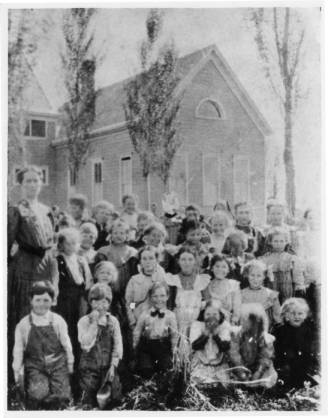The History of Cache County School District
-
Early History
The Cache County School District is nestled between the Wellsville and Bear River Ranges in Northern Utah. With the mission “to educate students for success in a changing world,” the District has gone through significant changes since its founding in 1908. From a one-room schoolhouse to a district of nearly 20,000 students, the growth of the Cache County School District has matched growth in the valley.
The education system in Cache County began in 1860 when a small school was built in Logan. Edward Smith was employed as the sole teacher. Over the next ten years, the number of schools in Logan quadrupled, with many other schools being established in the surrounding towns of Providence, Wellsville, Hyde Park, and Smithfield. Basic math, English, reading, and writing were taught to the schools’ eager students.
The small agricultural communities of early Cache Valley had little money to offer to their growing schools. However, they were eager to contribute, and many farming families donated grains and other farm products in place of cash. These goods were then used to build schools, pay teachers, and buy supplies for the students.
By 1908, there were over 20 independent school districts scattered across Cache Valley. In March of that year, the adoption of the Utah State Constitution called for all public schools to be consolidated into organized districts. It was then that the Cache County School District was formed. Initially, the community was against this consolidation, however, the improved facilities and opportunity for uniformity swayed them. Multiple teachers were hired to teach each age group and more materials were available to the students. However, with these changes, new problems arose.
Since Cache Valley was a predominantly agricultural, rural area, transportation became an issue with the new consolidation. Many smaller schools were closed in order to facilitate the new district and some students had to travel long distances in order to get to school. Wagons were still used as late as the 1930s, when winter conditions hampered other forms of transport. The establishment of paved roads improved transportation, as did the development of an Interurban Railroad in Ogden, Logan, and Idaho. In 1913, students who lived more than six miles away from school were given a stipend by the Cache County Board of Education to help pay for transportation. In 1927, the school district began buying buses for special event transportation, and by 1933, Cache County School District (CCSD) had adopted a distance-based busing system for every student who met the criteria. With the improvement of transportation, more students had access to education.
As the valley continued to develop, CCSD utilized a variety of methods to accommodate growth. School configurations over the years have included K-2 centers, 3-5 schools, 6-7 schools, 9th-grade centers, and 8-9 centers, and high schools to accommodate the ever-changing population of students. Currently, the District’s elementary schools house grades kindergarten through six; middle schools house grades seven and eight; high schools house grades nine through twelve.
CCSD Now
With all of these changes, the mission to educate and prepare students has never changed. The District is proud to lead the state in language arts and math proficiency. Eighty-one percent of CCSD students read at grade level by third grade and CCSD students earned the second-highest math proficiency scores as a large school district in the state of Utah on the 2023 RISE tests. In 2023, the average ACT score was 20.7 and the graduation rate was an impressive 96%. The dedication of both students and faculty members is paying off.
In order to fulfill its mission, CCSD works to provide programs and opportunities that not only engage every student but also encourage them to excel. Some of these include:
- K-12 Dual Language Immersion Program — offering Spanish, Chinese, French, or Portuguese in the classroom setting; leading to advanced-level proficiency and the opportunity to earn 3000-level upper division university course credits
- Accomplished Competitive Programs — Utah 4A Division sports and activities, including football, volleyball, soccer, cross country, track and field, tennis, swimming, basketball, softball, golf, wrestling, baseball, and lacrosse, drill team, cheer, speech and debate
- Emphasis on the Arts and Creativity — all elementary schools partner with the Beverley Taylor Sorenson Arts Learning Program to incorporate art into the classroom. Students also participate in award-winning dance, music, theatre, and visual arts programs.
- STEM Integration and CTE Offerings — STEM experiences are integrated into curriculum; robust career and technical education offerings with hands-on, work-based opportunities
- Gifted and Talented Programs — offered at every elementary school; honor-leveled courses offered in secondary schools
- Advanced Placement and Concurrent Enrollment Programs — to encourage students to earn college credit early through 18 AP courses, 39 Concurrent Enrollment options, and many other opportunities through partnerships with Bridgerland Applied Technology College and Utah State University
This would not be possible without the Cache Education Foundation (CEF), a local non-profit with “a profound interest in the future of Cache Valley and its residents.” Since the CEF was founded in 1988, it has channeled more than eight million dollars to local students and educators to provide a “quality teaching and learning environment for students through funds and resources received from community and business members.”
Cache County School District has grown from the days of a handful of fledgling schools scattered across the valley to a district with over 1,100 teachers, 2,700 support staff, 25 school campuses, and nearly 20,000 students. As of 2023, it is the 10th largest school district in the state of Utah. With all of its growth, the motivation to prepare students for a changing world has remained constant.
The History of Cache Valley
-

Peter Maughan - Founder of Wellsville
 Jim Bridger - Early Fur Trapper
Jim Bridger - Early Fur TrapperThe name "Cache Valley" resulted from fur trappers who cached their furs and supplies in the valley during their explorations of the valley in the early 1800's. Before that time Shoshone Indians frequented this area.
Brigham Young directed settlers to Cache Valley in 1855 when a group with Bryant Stringham drove cattle to the valley in July at Haw Spring. Because of the harsh winter of 1855-56 cattle driven back to Salt Lake ended that enterprise.
Peter Maughan then sent in 1856 built Maughan's Fort later becoming the city of Wellsville. Other towns and settlements came after as new settlers arrived.
 The arrival of the Utah Northern Railroad in 1873 extended the markets for agricultural products in the valley. However, the founding of Utah State University in 1888, a land-grant agricultural college, changed the future of Cache Valley.
The arrival of the Utah Northern Railroad in 1873 extended the markets for agricultural products in the valley. However, the founding of Utah State University in 1888, a land-grant agricultural college, changed the future of Cache Valley.



